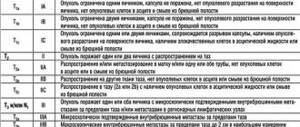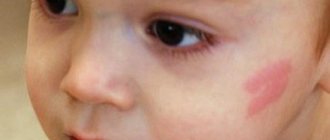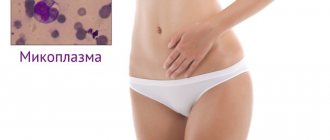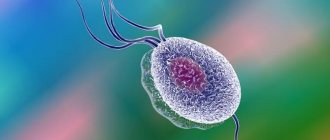Cystitis is an inflammatory process in the wall of the bladder, which leads to disruption of the urinary process.
The main manifestations of this pathology are pain of varying severity and disturbances in urination. Symptoms of cystitis in women often lead to their social maladaptation, interfere with their ability to work, and can negatively affect their personal life.
The development of cystitis is facilitated by the anatomical features of the structure of the urinary system in women. In the female body, the urethral canal is shorter than in the male. In addition, their urethral opening is closer to the anus, which facilitates the entry of microorganisms into the urinary system.
Reasons for development
Since the urethra in women and girls has its own anatomical characteristics, and its close location to the anus allows bacteria or viruses to enter the urinary tract, this disease often progresses in them. In addition, the causes of cystitis in women are:
- wearing uncomfortable or tight underwear;
- incomplete emptying of the bladder - most often observed in pregnant women;
- anal sex;
- severe fatigue;
- deficiency of vitamins in the body;
- a wide range of other diseases of internal organs, in particular the genital organs;
- various intestinal infections and staphylococci;
- transmission of a virus or bacteria through the bloodstream;
- inflammation of the genital organs;
- weakened immune system;
- hormonal changes;
- allergic reactions;
- the effect of radiation or radiation on the pubic area;
- exposure to chemicals;
- prolonged exposure to cold temperatures, hypothermia due to wearing short clothing that does not cover the lower back;
- promiscuity or lack of protection during this process;
- lack of personal hygiene;
- complications from gynecological intervention;
- foreign objects in the urinary canal;
- Unhealthy Lifestyle;
- changes in the female body related to pregnancy.
A combination of several factors can lead to the manifestation of cystitis in women - it is for this reason that this disorder is widespread. Eliminating symptoms at home, without the knowledge of doctors, can lead to complications.
Causes
Cystitis is a disease common to all ages. It is mainly caused by the following reasons:
- hypothermia of the pelvic areas;
- injuries to the bladder mucosa;
- passive lifestyle;
- spicy and fatty foods;
- the presence of chronic gynecological or sexually transmitted diseases;
- the presence of foci of infection in the body;
- unprotected sex;
- lack of hygiene.
The direct cause of inflammation in the bladder is pathogenic pathogens. Most often it is caused by E. coli (in 90% of patients). Other infectious agents are:
- staphylococcus;
- Klebsiella;
- Proteus.
Inflammation can be triggered by infection during certain therapeutic measures (including instrumental diagnostics); mechanical damage is also considered as a method of infection. Symptoms of cystitis can be caused not only by exposure to infections, but also by fungi, mycoplasma, trichomonas, chlamydia, viruses, etc.
The inner surface of the bladder is equipped with powerful protective mechanisms that prevent the penetration of microorganisms into the wall of the organ. However, local immunity decreases and the pathogenicity of microbes increases, causing disease, when provoking factors appear:
- hypothermia;
- hypovitaminosis;
- exhaustion;
- existing concomitant diseases;
- hormonal disorders;
- transferred operations;
- immunodeficiency.
First signs
The main signs of cystitis in women are as follows:
- burning or itching after urination;
- pain above the pubis, most often after visiting the toilet;
- frequent urge to urinate;
- discharge from the urethra during cystitis in a woman, especially purulent or bloody;
- slight increase in body temperature (up to 37.5 °C).
If the infection spreads up the urinary tract, then cystitis may be accompanied by damage to the ureters and pyelocaliceal system of the kidneys. In this case, fever, pain in the lumbar region, and deterioration in general condition occur.
Symptoms
The main symptom of the disease is a frequent desire to pass urine. In addition, symptoms of cystitis in women may include:
- urine is excreted in small portions;
- discomfort and burning sensation directly during the process of emptying;
- frequent visits to the toilet at night;
- the discharge is cloudy, often mixed with mucus or blood;
- a constant feeling of heaviness in the bladder or incomplete emptying;
- before the process of urinating, a woman needs to push;
- urinary incontinence (occurs in rare cases);
- weakness of the body;
- temperature rise to forty degrees;
- urine takes on a sharp, unpleasant odor;
- the appearance of pain in the kidneys and spine.
When you first detect one or more signs of cystitis in women at home, especially blood in the urine, you should immediately seek help from a clinic.
Learn more about symptoms
The main symptoms of cystitis are frequent urge to urinate. In particularly difficult cases, they can recur after a few minutes both during the day and during sleep. The patient most often suffers from the inability to independently control the functioning of the bladder, this often leads to the progression of enuresis.
In the absence of timely and proper treatment, the initial symptoms of cystitis are accompanied by dysuria, which is accompanied by difficulty urinating, with elements of pain. As a result of this, women complain of sharp pain in the lower abdomen or lower back. And in older people, fluid retention in the bladder area is often observed.
Sometimes the main signs of this disease in women are accompanied by a serious increase in temperature, chills, nausea and sometimes vomiting. Severe progression of the disease can be manifested by the presence of blood in the urine, which indicates a complicated course of cystitis; it requires urgent treatment.
The intensity and nature of pain during cystitis in women can vary from mild discomfort to unbearable pain. In addition to pain, little girls may experience sudden urinary retention. During cervical cystitis, dysuria is more pronounced. Extremely painful anxiety is observed with the interstitial form of cystitis, as well as with inflammation that was caused by chemical or radiation factors.
The primary and constant sign of this disease in women is leukocyturia, which causes the urine to become cloudy and purulent. Hematuria in most cases is microscopic in nature and develops at the end of urination. An exception may be the hemorrhagic form of cystitis in women, during which macrohematuria is the leading manifestation. During the period of acute cystitis, body temperature can rise to 37.5-38°C, and general health and even activity suddenly deteriorate.
A feature of this disease in women is frequent relapses. More than 50% of women experience a recurrence within the year of the first episode. During the recovery of the disease in a period of up to one month, it is worth suspecting the persistence of the infection in the body; if the disease returns after more than a month, it is a relapse. The manifestation of the chronic form of female cystitis is similar to the above characteristics of the acute form, but they are not so pronounced. Pain when emptying the bladder is more tolerable, frequency of urination makes it possible not to lose performance and maintain the same lifestyle.
During exacerbations of this disease in women, the clinical picture of acute/subacute inflammation progresses; During the period of remission, clinical and laboratory data on the active inflammatory process are often absent.
Classification
The classification of cystitis is based on different characteristics. Depending on the pathogenesis, inflammation of the bladder can be:
- primary – if there are no diseases of other urinary organs;
- secondary – accompanies chronic infections in the urinary tract (urethritis, pyelonephritis), develops against the background of urolithiasis, hydronephrosis, congenital anomalies, tumor growth, prostate adenoma, promoting stagnation of urine.
Depending on the capture and area of distribution, the following types of cystitis are distinguished:
- total - the entire inner surface of the bladder is inflamed;
- trigonitis - the process covers only the zone of the anatomical triangle;
- cervical - local inflammation in the lower part.
In addition, there is a classification of cystitis according to their origin:
- Cystitis that is of infectious origin is predominantly diagnosed. But sometimes inflammation of the bladder occurs, which develops as a consequence of chemical influence (as a consequence of treatment with certain medications), thermal influence (as a consequence of rinsing the bladder with too hot a liquid).
- Cystitis can be caused by burns, as well as injury to the bladder mucosa. However, even with such phenomena, a decisive role in the development of the disease is played by infection, which quickly joins.
Based on this, cystitis occurs:
- infectious;
- chemical;
- thermal;
- toxic;
- medicinal;
- neurogenic;
- ray;
- involutional;
- postoperative;
- viral;
- parasitic.
Acute cystitis
The occurrence of cystitis in acute form is characterized by suddenness, as well as the appearance of pronounced pain when urinating, itching and burning, and in some cases, temperature.
Chronic form
Chronic cystitis is detected more by laboratory indicators. Externally or subjectively, the patient may not present any complaints. However, laboratory values of blood and urine indicate the presence of infection in the lower urinary tract. At any moment, chronic cystitis can worsen, and all the signs of acute cystitis will appear.
Complications
Due to its high prevalence (the pathology is diagnosed in 40% of women around the world), the seriousness of the consequences of cystitis is often underestimated.
With proper treatment, provided that there are no reasons supporting the course of the pathology, the symptoms of acute cystitis go away, and the woman’s well-being noticeably improves. If the necessary therapeutic effect is absent, the disease becomes chronic, which is fraught with serious health complications.
Chronic cystitis is characterized by damage to most of the bladder mucosa. At the same time, swelling and thickening appear in the affected areas, against the background of a decrease in the elasticity of the epithelium.
The progress of the pathological process leads to complications that threaten the health of vital organs and systems:
- in 95% of cases, kidney disease occurs - pyelonephritis, renal failure;
- organic changes in bladder tissue are fraught with rupture of its walls and the development of peritonitis;
- frequent inflammation is one of the main reasons for the formation of adhesions;
- decreased reproductive function, danger of complete loss of the ability to bear children;
- urethritis;
- tumor processes;
- formation of ulcers on the walls of the bladder, bleeding;
- urolithiasis disease;
- muscle damage and loss of bladder tissue tone, which leads to bladder dysfunction and urinary incontinence.
In a woman’s body, there are periods during her life when a predisposition to the development of cystitis is associated with natural physiological changes.
Types and forms of cystitis
There are several types of cystitis:
- Hemorrhagic cystitis in women is an inflammatory reaction of the bladder walls caused by infection. With this type of disease, the urine comes out with blood and has an unpleasant odor. Hemorrhagic acute cystitis has a detrimental effect on the mucous membrane, which leads to increased permeability of the walls of blood vessels, which is why blood enters the urine.
- Interstitial cystitis is an inflammation of the bladder that is not infectious. People with this type of disease experience discomfort during urination; the volume of the bladder becomes smaller in size, which leads to pain when filling it.
- Radiation cystitis is a side effect of radiation therapy due to damage to the mucous membrane of the bladder.
- Genital cystitis - appears after intimacy when the microflora in the genitals changes or due to infection with sexually transmitted diseases.
- Postcoital cystitis - develops when E. coli, fungi, mycoplasma and other pathogens enter the bladder.
- Cervical cystitis is an inflammation of the bladder neck that causes urinary incontinence.
- “Honeymoon” cystitis can appear in young women and is associated with the first and subsequent frequent sexual intercourse. The first contact is accompanied by an abundance of vaginal microflora into the urethra and bladder; their walls are not ready for such an attack and inflammation develops.
The following forms of cystitis are also distinguished:
- Acute cystitis in women is the first stage of cystitis, when the infection occurred recently and did not have time to cause complications. Not to be confused with exacerbation of cystitis, these are different concepts.
- Chronic cystitis in women - if acute cystitis is not treated for a long time or therapy is not completed, it becomes chronic.
Diagnostics
The first symptoms of cystitis force the patient to seek medical help. To confirm the diagnosis of “bladder inflammation” and receive treatment, you need to contact a nephrologist, urologist, or gynecologist. The doctor will collect the necessary medical history and ask what medications the patient is taking, whether he has had unprotected sexual intercourse, stressful situations, and what concomitant diseases he has.
Laboratory and instrumental studies for cystitis:
- General urine analysis;
- General blood analysis;
- Bacteriological culture of urine to identify the causative agent of infection;
- Ultrasound of the bladder to study organic changes in the structures of the affected organ;
- Urethroscopy and cystoscopy.
Obtaining the result of a bacteriological examination of urine may take several weeks, but based on the results, the attending physician, knowing the causative agent, will be able to quickly cure cystitis and accurately select an antibiotic. Cystoscopy is not performed in acute forms of the disease, although it is an exclusively informative study.
How to relieve an attack of cystitis? First aid at home
Attacks of acute cystitis are extremely painful for patients. The intensity of pain and discomfort can be very great. The first and most important way to relieve an acute attack of cystitis is to consume as much fluid as possible. Many people believe that if you have cystitis, you should drink less water, then the pain and other symptoms will go away. This is a fundamentally misunderstanding of the problem. Without enough water, an attack can drag on for a long time. Thanks to increased fluid intake, foreign substances and microorganisms are quickly evacuated from the body, and pain relief occurs.
In severe cases, it is recommended to resort to medication:
- The best solution would be to take antispasmodics. They will eliminate spasms and help reduce the tone of the smooth muscles of the bladder: No-shpa, Spazmalgon, Papaverine, etc.;
- In addition to antispasmodics, pain is relieved by analgesics (which reduce the conductivity of nerve endings). Analgin, Ketorol and others;
- Herbal preparations containing oregano herb and hop cones, for example Urolesan, also help to reduce spasm and pain caused by cystitis. The product is available in the form of drops and capsules for oral administration. It is believed that the drops begin to act faster, and their antispasmodic effect is slightly more pronounced than that of capsules. However, capsules are more convenient for subsequent long-term use.
- You should never take antibacterial drugs on your own. Taking antibiotics is guaranteed to change the picture of laboratory tests, and the specialist will not be able to establish the source and cause of the disease. Such measures also risk insufficient impact on the source of the problem. By self-medication, the patient can only suppress the disease and remove the symptoms, but cystitis will become chronic;
- If the diagnosis is confirmed and already known to the patient, you can resort to taking antimicrobial drugs. Among the effective drugs are Nolitsin, Furadonin, Monural, etc. Furadonin is also a powerful diuretic, so it is recommended to combine the use of these drugs with increased fluid intake (it is better to stick to simple, clean, still water).
In all other cases, it is better not to self-medicate. Attacks of complicated cystitis (with blood, hemorrhagic, etc.) are relieved exclusively in a hospital setting. Otherwise, life-threatening bleeding may develop.
Treatment of cystitis in women
For the treatment of both acute and chronic cystitis in women, you should consult both a gynecologist and a urologist. Usually, in case of acute cystitis, in case of adequate therapy, cure occurs very quickly - within 5-7 days.
If the infectious nature of cystitis in a woman is confirmed, treatment is necessarily aimed at destroying pathogenic microorganisms with antimicrobial agents and antibiotics, to which pathogens are sensitive.
What medications are used to treat cystitis?
Antibiotics occupy a central place in the treatment of acute and chronic cystitis. The selection of an antibacterial drug should be done exclusively by a specialist, since self-medication can lead to irreversible health consequences.
Let's look at the most effective antibiotics used for cystitis in women:
- Monural is an antibiotic based on fosfomycin. Available in granule form. Taken once for acute cystitis;
- Palin - tablets for cystitis and other acute or chronic infections of the urinary system. Belongs to the group of quinolones. The active substance is pipemidic acid;
- Furagin is a popular antibiotic based on nitrofuran. Relevant when affecting bacteria, the sensitivity of which has been proven by Furagin by culture;
- Nolitsin (analogs Norbactin, Normax) is a reserve antibiotic drug. Prescribed if the use of other medications has not provided a therapeutic effect. The active ingredient is norfloxacin from the group of fluoroquinols;
- Nitroxoline is a medicine from the group of oxyquinolines. It is active against most bacteria and Candida fungi;
- Furadonin is an antimicrobial agent that suppresses the activity of bacterial infections. The use of tablets is also appropriate as a preventive measure for urinary tract diseases.
Anti-inflammatory . To relieve inflammation of the bladder mucosa during cystitis, it is recommended to take non-steroidal anti-inflammatory drugs (NSAIDs).
- For example, Ibuprofen, Nurofen, Diclofenac, Nemesil. Along with the elimination of inflammatory processes, drugs in this group provide an analgesic effect, relieving pain and discomfort inherent in the pathology.
Antispasmodics . They have antispasmodic properties - an essential component of restorative and maintenance therapy for cystitis.
- The most popular antispasmodics are: No-Shpa, Papaverine, Drotaverine. The effect of antispasmodic drugs is expressed in the elimination of spasm of the smooth muscles of the bladder and the relaxation effect that relieves pain.
The use of herbal remedies is an effective way to enhance the effects of drug therapy. Herbal remedies are based on natural plant components that have biological activity.
- Urolesan is a drug that provides antiseptic, antispasmodic and diuretic effects. Available in the form of capsules, syrup or drops.
- Cyston is a tablet based on plant extracts with nephrolytic and antimicrobial properties.
- Phytolysin is a paste based on orange and fir oils. It has a diuretic, anti-inflammatory and antispasmodic effect. Prevents the development of urolithiasis.
Remember that taking any medications is possible only as prescribed by a doctor. Despite their high therapeutic effectiveness, modern drugs have many contraindications and can cause unwanted side reactions.
Antibiotics for cystitis
When treating acute cystitis, antibiotics are indispensable, especially if the disease is caused by bacterial microflora. Antibiotics do not work on viruses and fungi. In the case of bacterial cystitis, the doctor may prescribe an antibiotic, but if it is ineffective, a urine culture will have to be done to test for sensitivity to antibiotics. Chronic cystitis can be cured without antibiotics in a week and, as not only doctors say, forever.
There are now many broad-spectrum antibiotics available. But we must take into account that antibiotics have many contraindications, including allergic reactions. Antibiotics are especially dangerous during early pregnancy; the most dangerous period is the first 7 weeks. But not only in the first weeks, but throughout pregnancy, antibiotics are not advisable.
And another disadvantage of using antibiotics is getting used to them; if for the first time they had a positive result during treatment, then when taken again they can no longer provide the proper therapeutic effect. We have to use other, stronger antibiotics. And this undermines not only the immune system, but also disrupts the microflora in the intestines and vagina, causing intestinal dysbiosis and thrush in women.
To increase the effectiveness of antibiotic therapy, doctors often include herbal preparations in the treatment regimen for cystitis. For example, Urolesan, having a complex effect (anti-inflammatory, antiseptic, antispasmodic and diuretic) can help reduce inflammation, relieve spasms and facilitate urination. Studies confirm that adding Urolesan to the treatment regimen increases the effectiveness of treatment.
Folk remedies
You can treat cystitis at home with traditional medicines. Only before starting such treatment should you consult with your doctor. It is also necessary to understand that traditional methods and remedies are not effective enough to cure cystitis completely, and therefore can be used exclusively as a complement to the main therapy.
We bring to your attention the simplest and most effective methods of treating cystitis with folk remedies.
- Drink a decoction of dill seeds , which relieves pain and reduces inflammation. You can also prepare dill infusion by pouring boiling water over the crushed seeds. However, such drinking is contraindicated for hypotensive patients and people suffering from gallbladder diseases.
- Millet is used to treat this disease . To prepare the drink you need 2 tbsp. l. pour millet with 2 cups of boiling water, then cook for 5 minutes. After the product has stood for another 5 minutes, the liquid should be drained and drunk on the first day of illness, 1 tbsp. l. every hour, on the second day - 3 tbsp. l. every hour, on the third - half a glass of broth. Treatment can last up to 7 days.
- A decoction of chamomile helps with cystitis . You can also prepare an infusion by pouring 1 tbsp. l. herbs with 1 glass of boiling water and leave for 15 minutes. Drink a third of a glass three times a day before meals. There are also homeopathic remedies and dietary supplements that include chamomile.
- An effective remedy for treating this disease is parsley. You can prepare an infusion of parsley seeds , add 1 tsp. parsley, pre-chopped, with two glasses of cold water. Take after the product has been infused for 10 hours. This amount of the product should be taken throughout the day, drunk in small doses. You can also consume parsley seeds in their pure form, after crushing them.
- Lingonberry leaf is widely used (you can see a photo of what this plant looks like). To prepare the product you need 1 tbsp. l. lingonberries and pour a glass of boiling water. After infusing for an hour, use half a glass three times a day before meals.
- Baking soda is often used to treat cystitis. A solution is prepared from it at the rate of 1 tbsp. l. soda per 1 liter of boiled water. You need to drink the solution 1 tbsp. l. three times a day. You can also syringe the genitourinary tract with a product called soda solution.
Homeopathic remedies are also used in the treatment of cystitis. However, homeopathy for this disease also requires the appointment of a specialist and use under his supervision.
Nutrition
If you often visit the toilet, and a burning sensation appears in the lower abdomen, most likely you have suffered from cystitis. To alleviate the condition, take pills, use folk remedies and follow a diet. If you give up food that irritates your inflamed bladder during your illness, this will speed up your recovery.
A diet for cystitis has an antiseptic and diuretic effect on a girl’s body, which is important for fighting the bacteria that caused the disease.
- Throughout the day, eat three full meals and a couple of snacks. The urinary system functions most actively at the beginning of the day, so the combined share of breakfast and lunch should be 75% of the daily food intake.
- The diet of a woman suffering from cystitis should consist of lightweight natural products.
- Drink plenty of fluids to flush the urinary system. Water, fruit juice, fruit and berry compote, herbal infusion, weak tea will do. It is allowed to drink natural juices, except tomato.
- Introduce diuretic foods into your diet - carrots, zucchini, watermelons, spinach, cucumbers. If the condition improves, you can eat homemade yogurt, cottage cheese, fish, and lean meat. For cystitis, dietary soups, porridge with water, and mashed potatoes are allowed.
What to do if you can’t see a doctor?
If you cannot seek medical help, you can try to eliminate the signs of inflammation yourself.
- In acute forms of cystitis, bed rest and taking painkillers and antispasmodics are required.
- If there is no pus or blood in the urine, you should place a heating pad or a bottle of warm water on the lower abdomen and under the lower back. Not a bad steam bath for your feet. Often such procedures are quite sufficient to relieve an attack of cystitis.
- You can also use pre-washed hot red brick or a piece of granite. The stone should be placed in an enamel bucket, and, having wrapped the upper edge of the vessel well with a towel, sit on it (on the bucket) for 10 minutes, covered with a warm blanket. Immediately before the procedure, you can drop 5 drops of triple cologne onto the brick. After warming up, immediately go to bed.
- Every hour you should drink a glass of warm drink (green or kidney tea, still mineral water). This will help flush out the infection from the bladder more quickly.
- If blood is detected in the urine, thermal procedures are contraindicated. They can be replaced by douching with a lukewarm infusion of eucalyptus (1 cup of dry leaves per liter of boiling water). The procedure must be carried out every 2 hours.
- During the treatment period, it is necessary to avoid fatty, fried, spicy, sour and salty foods, as they irritate the walls of the bladder. Alcoholic drinks and sexual contact are also prohibited.
- To relieve pain, you can use painkillers, No-shpu, Papaverine, special vaginal or rectal suppositories. As for antibiotics, taking them without prior medical examination is strictly prohibited.
It must be kept in mind that these are only temporary measures that may bring relief. A visit to the doctor is still required.
Prevention
Treatment for a urinary tract infection requires modification of certain habits and diet. Prevention of cystitis includes the following measures:
- a diet with limited irritating foods (spicy foods, spices);
- regular visits to the toilet;
- compliance with personal hygiene rules;
- hypothermia should be avoided;
- always change a wet swimsuit to a dry one in the pool and on the beach;
- promptly treat foci of chronic infection.
Cystitis in women is not a dangerous condition and in most cases responds well to drug therapy. However, it can become chronic, which is often observed against the background of weakened immunity or somatic pathologies. Simple prevention of cystitis in women, as well as high-quality treatment of acute forms of the disease, will help to avoid relapses.
Diet
To achieve the maximum therapeutic effect, it is important to be guided by the following principles when preparing a diet:
- Foods and drinks must have a diuretic effect;
- Salt should be removed from the diet as much as possible;
- Any spicy food will be prohibited;
- The content of protein products should be minimized;
- Fats should be excluded;
- Sugar and any substitutes for it must be removed from the menu;
- Diet should not cause constipation;
- Processing of all products should be minimal; frying, smoking, and canning are prohibited.
Allowed products for cystitis:
- A variety of fresh vegetables in large quantities.
- Boiled beets.
- Fruits that grow in the area.
- Fermented milk products - kefir, fermented baked milk, yogurt, natural yogurt.
- Porridge.
- Vegetable soups not prepared with broth.
- Boiled meat and fish.
The following foods should be excluded from the diet of patients:
- Smoked, pickled and salted foods.
- Spicy dishes and seasonings, strong spices, including onions, parsley, garlic, horseradish.
- Cakes, pastries and other baked goods.
- Sweets, including chocolate and candies.
- Fatty and salty cheeses.
- Coffee, cocoa and strong tea.
Drink at least 2 liters of plain water during the day (you can use mineral water without carbon), drink berry fruit drinks, non-concentrated juices, herbal teas (with bearberry, corn silk, kidney tea), and rosehip decoction.
Taking into account the basic recommendations of doctors, you can independently create a menu that will not harm the patient:
- In the morning you are allowed to eat any cereal porridge.
- For lunch, vegetable soups, salads with vegetable oil dressing and steamed meat dishes are prepared.
- Dinner should be light and consist mainly of vegetables allowed for consumption.












